Nebra Disc – Artifact That Represents 3,600-Year-Old Astronomical Knowledge
A. Sutherland - AncientPages.com - A controversial Bronze Age disc known as the Nebra Sky Disc is one of the most fascinating and perhaps some would say, disputable archaeological finds of recent years.
It has been suggested that this old artifact represents 3,600 years old astronomical knowledge.
However, there are doubts that the Nebra disc was used by prehistoric astronomers as a precision tool for gazing at the sky.
Was the Nebra Sky Disc the first true representation of the cosmos, used for measuring astronomical phenomena, or was it a tool used for shamanistic rituals?
"It's a difficult question to answer, but I do not think it was used as an instrument used for observing objects in the sky," said Curt Roslund, an astronomer at Gothenburg, Sweden. He argues that few features on the disc tend towards exact representation and that it is more likely to have been of symbolic value - perhaps used in shamanic rituals.
So what exactly is the Nebra disc and what was it used for?
Dated to 1600 BC, this bronze disc with gold-leaf decorations has a diameter of 32 cm and weighs around 4 pounds. It is painted blue-green and embossed with gold leaf symbols of the Moon, Sun and stars, and a curved gold band (interpreted as a sun boat) and an additional gold band on the edge of the disc, which probably represents one of the horizons.
It was discovered by some treasure hunters using a metal detector in a prehistoric area of Mittelberg Hill near Nebra, a small town in the district of Burgenlandkreis of Saxony-Anhalt, 112 miles southwest of Berlin, Germany. Along with the disc, the hunters discovered two swords, two axes, a chisel, and fragments of armlets.
The discoverers' unprofessional removal from the ground, unfortunately, damaged the fragile disc's outer rim and one of its 32 stars was lost.
Was the disc once attached to something?
Many researchers believe the disc is the oldest known representation of the cosmos. Was the Nebra Disc once an astronomical instrument to determine planting and harvest times for an agricultural society who lived in Bronze Age? It has been determined, the angle between the pair of arcs on either side of the disc is exactly 82 degrees.
Does it relate to the sun's passage across the sky in central Europe which measures also exactly 82 degrees?
Credit: MessageToEagle.com/AncientPages.com
The pair of arcs may represent the sun solstices for Mittelberg Hill, where in fact the disc was found. It would mean that the Bronze Age people of central Europe were able to make very advanced celestial measurements much earlier than diverse textbooks suggested.
Since 2004, at least, the Nebra Disc has remained a subject of deep controversy.
On the contrary, the Nebra Disc is old and genuine. Numerous tests conducted by the Institute for Archaeological Research in Halle, Germany showed the artifact's true antiquity. It has been concluded that the artifact represents a complex astronomical clock for the synchronization of solar and lunar calendars.
We must not forget that the sky disc of Nebra was found near Europe's oldest observatory in Goseck - first identified from aerial photographs.
Goseck represents the remains of what is thought to be Europe's oldest observatory that consists of a huge circle, 246 feet in diameter, and is dated to approximately 4900 BC.
Were the intriguing details on the disc-based on previous sky observations made by the ancients gathered at the primitive observatory at Goseck?
Written by – A. Sutherland - AncientPages.com Senior Staff Writer
Copyright © AncientPages.com All rights reserved. This material may not be published, broadcast, rewritten or redistributed in whole or part without the express written permission of AncientPages.com
More From Ancient Pages
-
 First Kisses May Have Helped Spread Oral Herpes 5,000 Years Ago – Scientists Say
Archaeology | Jul 30, 2022
First Kisses May Have Helped Spread Oral Herpes 5,000 Years Ago – Scientists Say
Archaeology | Jul 30, 2022 -
 Dark And Light Sides Of Pax Romana: Great Political Slogan Introduced After Civil Wars
Ancient History Facts | May 20, 2023
Dark And Light Sides Of Pax Romana: Great Political Slogan Introduced After Civil Wars
Ancient History Facts | May 20, 2023 -
 Who Deceived Mighty Yuku God Of Rain And Thunder In Beliefs Of Yaquis Of Southern Arizona And Sonora, Mexico?
Native American Mythology | Dec 21, 2023
Who Deceived Mighty Yuku God Of Rain And Thunder In Beliefs Of Yaquis Of Southern Arizona And Sonora, Mexico?
Native American Mythology | Dec 21, 2023 -
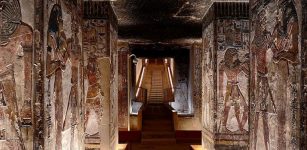 Why Pharaoh Seti I’s Tomb Had To Be The Most Glorious And Largest Ever Built In Valley Of The Kings
Featured Stories | Jun 19, 2021
Why Pharaoh Seti I’s Tomb Had To Be The Most Glorious And Largest Ever Built In Valley Of The Kings
Featured Stories | Jun 19, 2021 -
 Beautiful Ancient Irish Legend Of The Blessing Of The Bees – Ancient Tradition Revived In Ireland Again
Ancient Traditions And Customs | Oct 11, 2017
Beautiful Ancient Irish Legend Of The Blessing Of The Bees – Ancient Tradition Revived In Ireland Again
Ancient Traditions And Customs | Oct 11, 2017 -
 A Glimpse Into The Past – Sights And Sounds Of St. Paul’s Cathedral Recreated
Archaeology | Oct 8, 2021
A Glimpse Into The Past – Sights And Sounds Of St. Paul’s Cathedral Recreated
Archaeology | Oct 8, 2021 -
 Katanga Cross: Symbol Of Secrets, Power And Valuable Currency Of The Congolese People
Ancient Symbols | Sep 10, 2018
Katanga Cross: Symbol Of Secrets, Power And Valuable Currency Of The Congolese People
Ancient Symbols | Sep 10, 2018 -
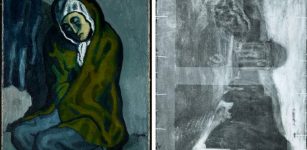 Hidden Details Discovered In Picasso’s Painting The Crouching Woman
Archaeology | Feb 28, 2018
Hidden Details Discovered In Picasso’s Painting The Crouching Woman
Archaeology | Feb 28, 2018 -
 What Can Medieval Skeletons Tell Us About Modern Day Pandemics
Archaeology | Feb 25, 2022
What Can Medieval Skeletons Tell Us About Modern Day Pandemics
Archaeology | Feb 25, 2022 -
 Gold Treasures Of Ancient King Discovered In North America Create Historical Problems
Ancient Mysteries | Jun 29, 2018
Gold Treasures Of Ancient King Discovered In North America Create Historical Problems
Ancient Mysteries | Jun 29, 2018 -
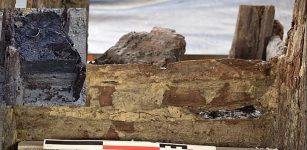 Czech Neolithic Well Is Oldest Wooden Structure In The World
Archaeology | Mar 11, 2020
Czech Neolithic Well Is Oldest Wooden Structure In The World
Archaeology | Mar 11, 2020 -
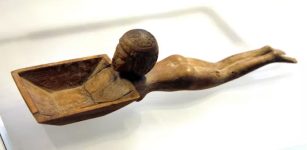 Intriguing And Suprising Ancient History Of Swimming That Started Over 100,000 Years Ago
Featured Stories | Dec 28, 2022
Intriguing And Suprising Ancient History Of Swimming That Started Over 100,000 Years Ago
Featured Stories | Dec 28, 2022 -
 Legend Of Jin Chan: The ‘Golden Toad’ – Money Frog That Brings Luck And Is A Feng Shui Charm
Chinese Mythology | May 5, 2016
Legend Of Jin Chan: The ‘Golden Toad’ – Money Frog That Brings Luck And Is A Feng Shui Charm
Chinese Mythology | May 5, 2016 -
 Remains Of 1,600-Year-Old Roman City Of Neapolis Devastated By A Tsunami Discovered
Archaeology | Sep 7, 2017
Remains Of 1,600-Year-Old Roman City Of Neapolis Devastated By A Tsunami Discovered
Archaeology | Sep 7, 2017 -
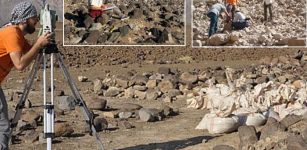 Evidence Of Copper Processing Unearthed At Archaeological Site In Oman
Archaeology | Mar 6, 2024
Evidence Of Copper Processing Unearthed At Archaeological Site In Oman
Archaeology | Mar 6, 2024 -
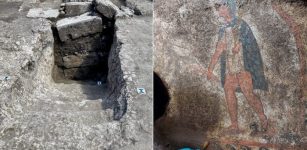 Extraordinary Painted Tomb Belonging To A Mercenary Warrior Found At Pontecagnano Necropolis
Archaeology | Oct 28, 2023
Extraordinary Painted Tomb Belonging To A Mercenary Warrior Found At Pontecagnano Necropolis
Archaeology | Oct 28, 2023 -
 LIDAR Discovers 18-Kilometer (11-Mile) Maya Road In The Yucatan Jungle
Archaeology | Dec 5, 2023
LIDAR Discovers 18-Kilometer (11-Mile) Maya Road In The Yucatan Jungle
Archaeology | Dec 5, 2023 -
 Varangian Guard: Professional Viking Warriors Highly Valued For Courage, Loyalty, Discipline And Fighting Skills
Featured Stories | Jun 4, 2017
Varangian Guard: Professional Viking Warriors Highly Valued For Courage, Loyalty, Discipline And Fighting Skills
Featured Stories | Jun 4, 2017 -
 Mysterious Giant Rock Face Discovered On B.C’s Central Coast – Natural Or Man-Made Structure?
News | Mar 28, 2020
Mysterious Giant Rock Face Discovered On B.C’s Central Coast – Natural Or Man-Made Structure?
News | Mar 28, 2020 -
 Huge Maya Stone Panel With 123 Glyphs Found Near Nohoch Muul Pyramid
Archaeology | Aug 14, 2024
Huge Maya Stone Panel With 123 Glyphs Found Near Nohoch Muul Pyramid
Archaeology | Aug 14, 2024



